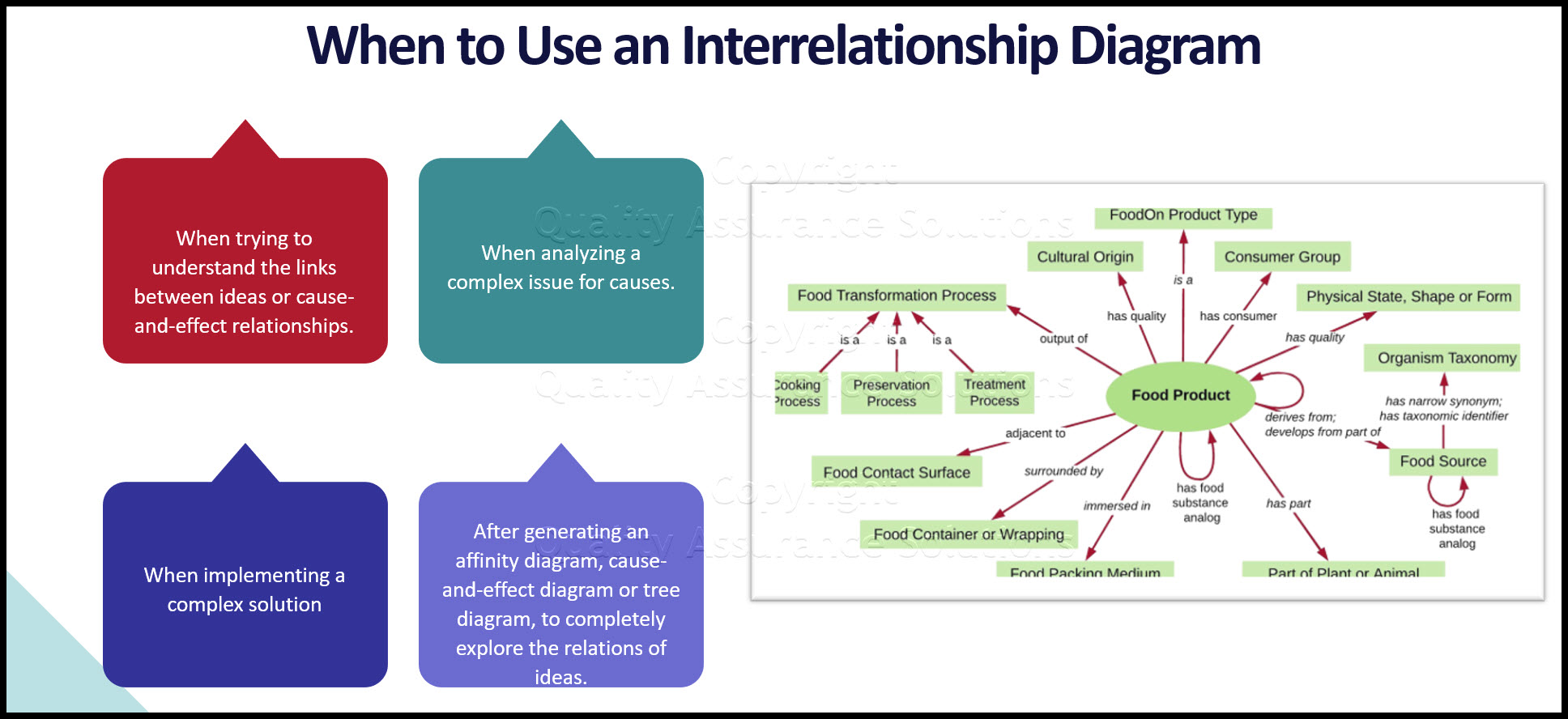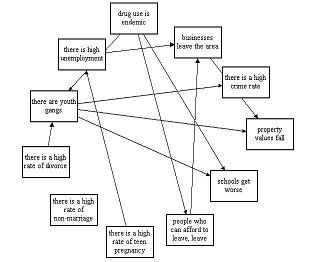Interrelationship Diagram

Description of the Interrelationship Diagram
The Interrelationship diagram shows cause-and-effect relationships. Just as importantly, the process of creating an interrelationship diagram helps a team analyze the natural links between the different aspects of a complex situation.
When to Use:
- When trying to understand the links between ideas or cause-and-effect relationships, such as identifying the area of greatest impact for improvement.
- When analyzing a complex issue for causes.
- When implementing a complex solution.
- After generating an affinity diagram, cause-and-effect diagram or tree diagram, to completely explore the relations of ideas.

Interrelationship Diagram Construction:
Gather sticky notes or cards, large paper surface (newsprint or two flip chart pages taped together), marking pens and tape.
Comprehensive ISO 9001:2015 Audit Checklist for Internal, Gap and Certification Audits.
1. Write a statement defining the issue for the relations diagram. Write it on a card or sticky note and place it at the top of the work surface.
2. Brainstorm ideas about the issue and write them on individual cards or notes.
If another tool such as an affinity diagram preceded this one, take the ideas from the affinity diagram or the most detailed row of the tree diagram or the final branches on the fishbone diagram. You may want to use these ideas as starting points and brainstorm additional ideas.
3. Place one idea at a time on the work surface. For each idea, ask: "Is this idea related to any others?" Place ideas that are related together. Leave space between the cards to allow for drawing arrows. Repeat until all cards are on the work surface.
4. For each idea, ask, "Does this idea cause or influence any other idea?" Draw arrows from each idea to the ones it causes or influences. Repeat the question for every idea.
5. Analyze the diagram:
6. Count the arrows in and out for each idea. Write the counts at the bottom of each box. The ones with the most arrows are the key ideas.
7. Note which ideas have primarily outgoing (from) arrows. These are the basic causes.
8. Note which ideas have primarily incoming (to) arrows. These are final effects that also may be critical to address.
|
Quality Assurance Solutions Robert Broughton (805) 419-3344 USA |
 |
|
Software, Videos, Manuals, On-Line Certifications | ||
|
450+ Editable Slides with support links | ||
|
Corrective Action Software | ||
|
Plan and Track Training | ||
|
AQL Inspection Software |
|
Learn and Train TRIZ | ||
|
Editable Template | ||
|
Templates, Guides, QA Manual, Audit Checklists | ||
|
EMS Manual, Procedures, Forms, Examples, Audits, Videos | ||
|
On-Line Accredited Certifications Six Sigma, Risk Management, SCRUM | ||
|
Software, Videos, Manuals, On-Line Certifications |

























